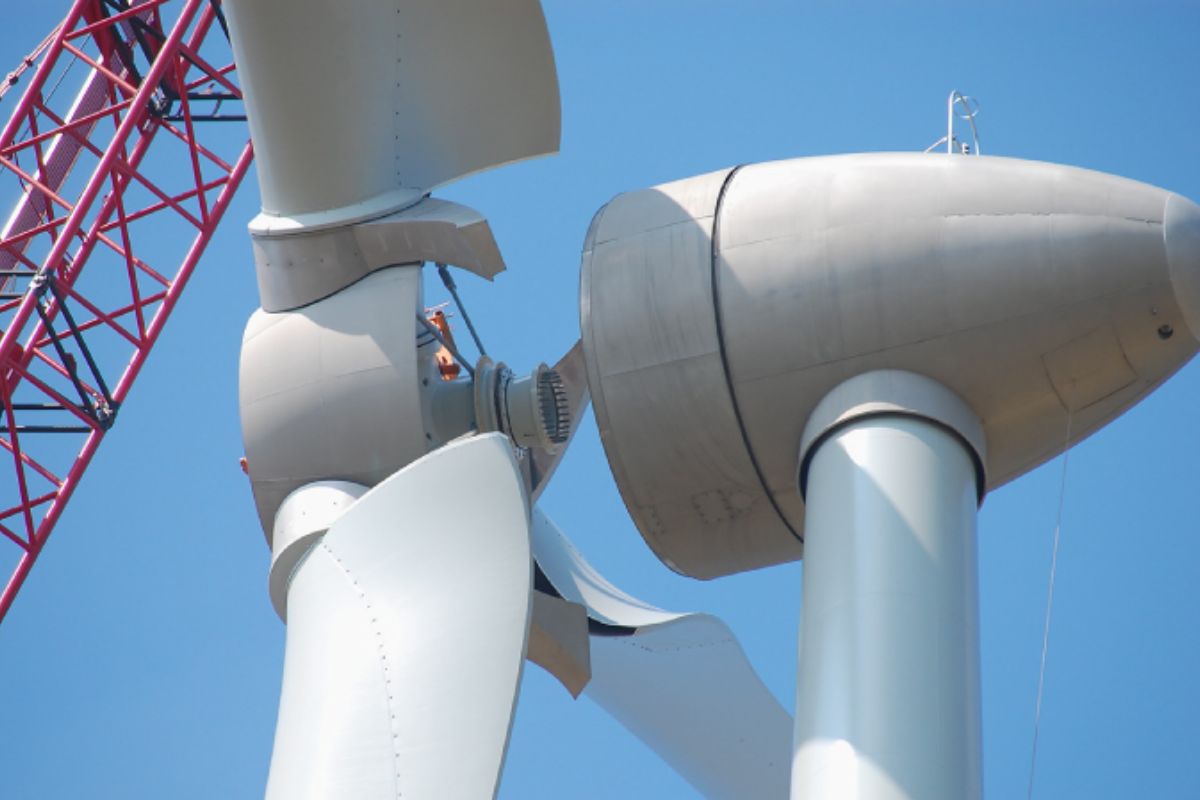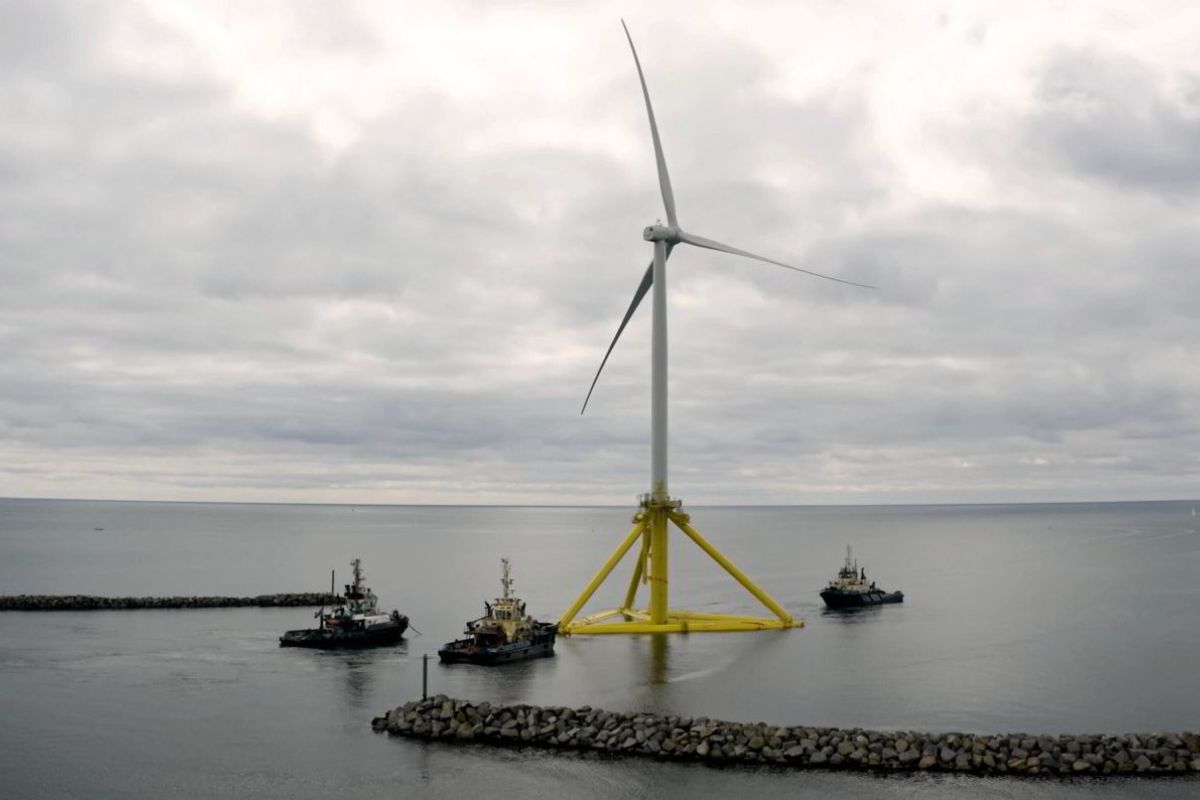Shell Mulls Exiting: Shell, a major player in the energy sector, is contemplating a significant move in Norway’s offshore wind industry. The decision to potentially step away from the offshore wind bid has stirred up a storm of speculation due to profit concerns.
Will this move mark a turning point in Shell’s renewable energy strategy or merely a temporary setback in their green energy ambitions? Stay tuned to uncover the potential ripple effects of Shell’s possible exit and the implications it may have on the future of offshore wind development.
Key Takeaways
- Shell’s potential exit stems from uncertain profitability in Norway’s offshore wind bid.
- Industry speculation surrounds Shell’s wavering stance in the bidding process.
- Regulatory hurdles and technical complexities contribute to Shell’s decision-making.
- Market impact looms as energy experts await Shell’s final bid decision.
Shell Considers Pulling Out of Norway’s Offshore Wind Farm Tender
Shell’s potential withdrawal from Norway’s offshore wind farm tender sends shockwaves through the energy industry as profitability concerns overshadow the company’s involvement. Marianne Olsnes, Shell’s Norway country manager, dropped a bombshell at an energy conference in Oslo by revealing the company’s hesitance towards the project’s financial feasibility.
The decision to potentially abandon this venture marks a significant twist in the narrative of Shell’s renewable energy pursuits. With the energy giant’s reputation at stake, the industry is left reeling from the aftershocks of this unexpected turn of events. Will Shell prioritize short-term gains over long-term sustainability goals?
Also Read: Shell’s 2023 Financial Report Unveils a $28 Billion Earnings Surge
The tremors of uncertainty reverberate across the sector, stirring up debates on the delicate balance between profitability and environmental responsibility. As Shell weighs its options, the fate of Norway’s offshore wind ambitions hangs in the balance, leaving stakeholders on edge.
Stay tuned as this high-stakes drama unfolds in the realm of renewable energy investment.
Challenging Business Case
Amidst formidable hurdles and economic uncertainties, the viability of participating in Norway’s offshore wind farm tender emerges as a daunting challenge for industry players. The business case for the project is shrouded in doubt, with Shell facing substantial obstacles that threaten profitability. The tender conditions have created a labyrinth of complexities, pushing energy companies into unfamiliar territory as they grapple with assuming responsibilities typically managed by grid operators.
Additionally, the prospect of delivering power to a market uninterested in higher-cost electricity adds another layer of complication to an already challenging scenario.
- Uncertain Profitability: The project’s financial outlook is grim, with profitability hanging in the balance.
- Technical Complexities: Energy companies are confronted with navigating unfamiliar responsibilities that were traditionally handled by grid operators.
- Market Demand: The unenthusiastic market reception towards higher-cost electricity further muddies the waters for industry players.
- Regulatory Hurdles: Navigating through the regulatory landscape poses a significant challenge, adding another layer of complexity to an already intricate situation.
Uncertainty Surrounding Bid Decision
Uncertainty looms over the decision on bidding for Norway’s offshore wind farm tender as Shell grapples with formidable challenges. Despite ongoing pre-qualification processes, doubts have been expressed regarding Shell’s commitment to the project. The company’s hesitation reflects the complexities and risks associated with venturing into the offshore wind sector. With the ultimate outcome of Shell’s bid still up in the air, industry experts eagerly await a definitive stance from the energy giant.
The wavering stance adopted by Shell has sent ripples through the offshore wind market, stirring speculation and intrigue among industry insiders. Will Shell rise to the occasion and seize the opportunity presented by Norway’s offshore wind farm tender, or will it succumb to the pressures and uncertainties that cloud the project’s profitability?
The stakes are high, and the clock is ticking as Shell navigates a critical juncture that could shape its future in the renewable energy landscape. Stay tuned for the latest updates on Shell’s bid decision as the saga unfolds.
Subsidies Offered Amidst Industry Skepticism
Norway’s substantial offshore wind development subsidies face industry skepticism amidst mounting challenges and doubts about their effectiveness. The government’s offer of 23 billion Norwegian crowns ($2.17 billion) to support the sector has left many questioning if it will be enough to combat the various obstacles in the industry’s path.
Inflation, interest rate hikes, and escalating supply chain costs are just a few of the hurdles that these subsidies may not adequately address. The industry is abuzz with concerns about whether the government’s financial support is truly sufficient to propel offshore wind development forward in a sustainable manner.
- Inflation Woes: Will the subsidies hold up against the rising tide of inflation?
- Interest Rate Hikes: How will increasing interest rates impact the effectiveness of the financial support offered?
- Supply Chain Struggles: Can the subsidies offset the escalating costs within the supply chain?
- Sustainability Concerns: Is the government’s funding sustainable in the long run, or will it fall short when faced with industry challenges?
Future Prospects and Alternative Opportunities
Exploring the Bright Horizons: Shell’s Potential Shift Towards Alternative Wind Opportunities
Despite facing profit woes in Norway’s offshore wind bid, Shell’s future prospects seem promising as the company considers alternative opportunities in the renewable energy sector. Line Olsnes, a representative from Shell, hinted at potential shifts towards forthcoming wind tenders, including floating wind tenders and offshore wind auctions. These alternative avenues could pave the way for Shell to establish a stronger presence in Norway’s evolving renewable energy landscape.
| Future Prospects | Alternative Opportunities |
|---|---|
| Participation in planned | Shifting focus towards |
| floating wind tenders | floating wind projects |
| Potential engagement in | Exploring opportunities in |
| future offshore wind | upcoming offshore wind |
| auctions | auctions |
Conclusion Of Shell Mulls Exiting
Shell’s potential exit from Norway’s offshore wind bid could spell disaster for the country’s renewable energy goals. With profit concerns overshadowing the project, the future of this venture remains uncertain.
Subsidies may provide a temporary solution, but industry skepticism looms large. Will Shell sacrifice Norway’s clean energy future for short-term gains?
Stay tuned to see if this decision sets a dangerous precedent for the global renewable energy sector.
Our Reader’s Queries
Q1 What is the foundation of the offshore wind farm?
A For offshore wind farms requiring turbines positioned 30 meters above sea level to evade wave impact, the prevalent choice is the gravity foundation system. This entails deploying a substantial concrete or steel platform, boasting a diameter of around 15 meters and weighing roughly 1,000 tons…
Q2 Why are offshore wind power projects failing?
A Developers encounter increased challenges in garnering investor support amid escalating interest rates. The higher cost of borrowing, driven by policymakers, adds complexity. Additionally, mounting supply chain expenses, partly echoing the impact of rising interest rates, pose further hurdles.




